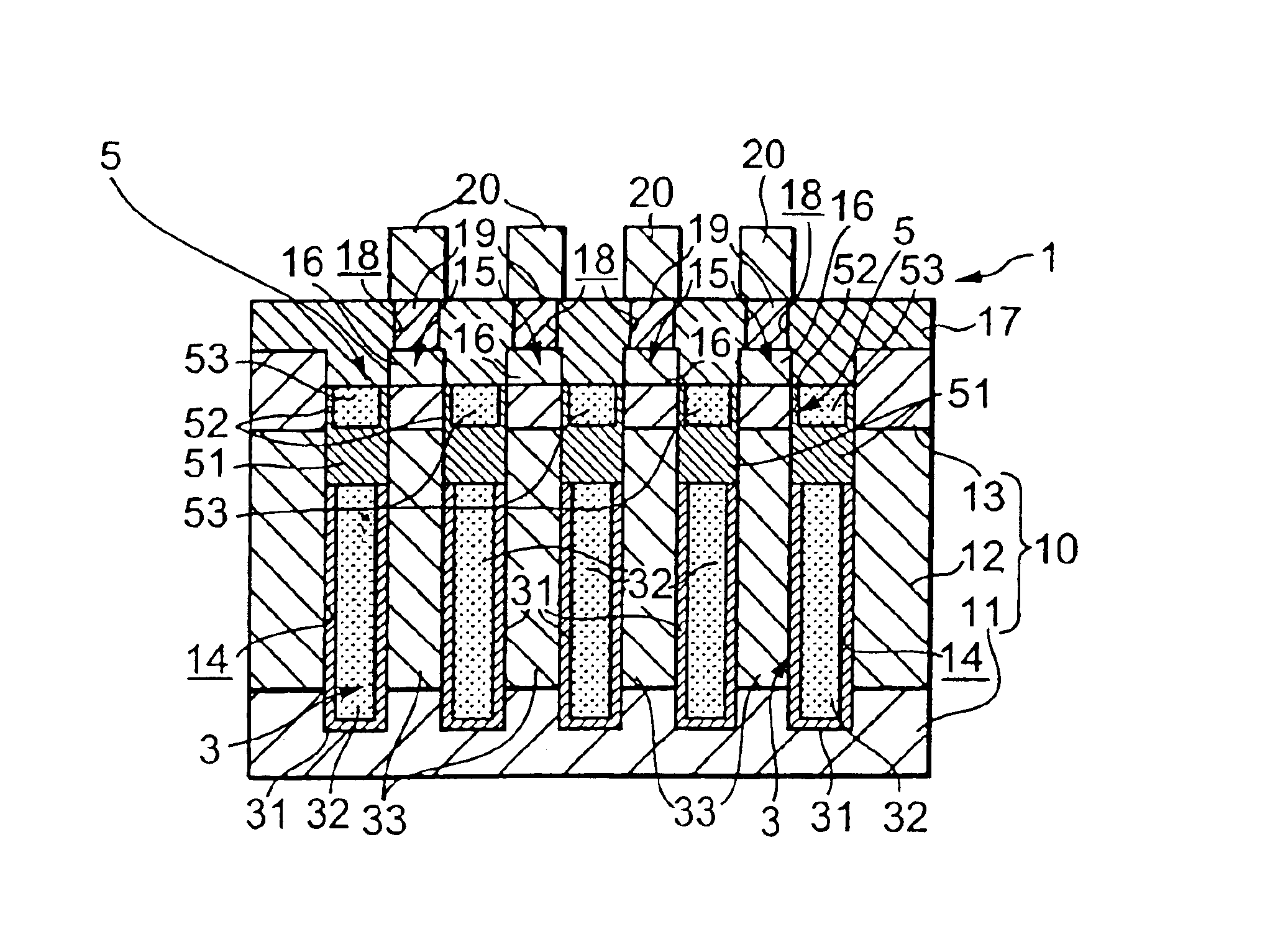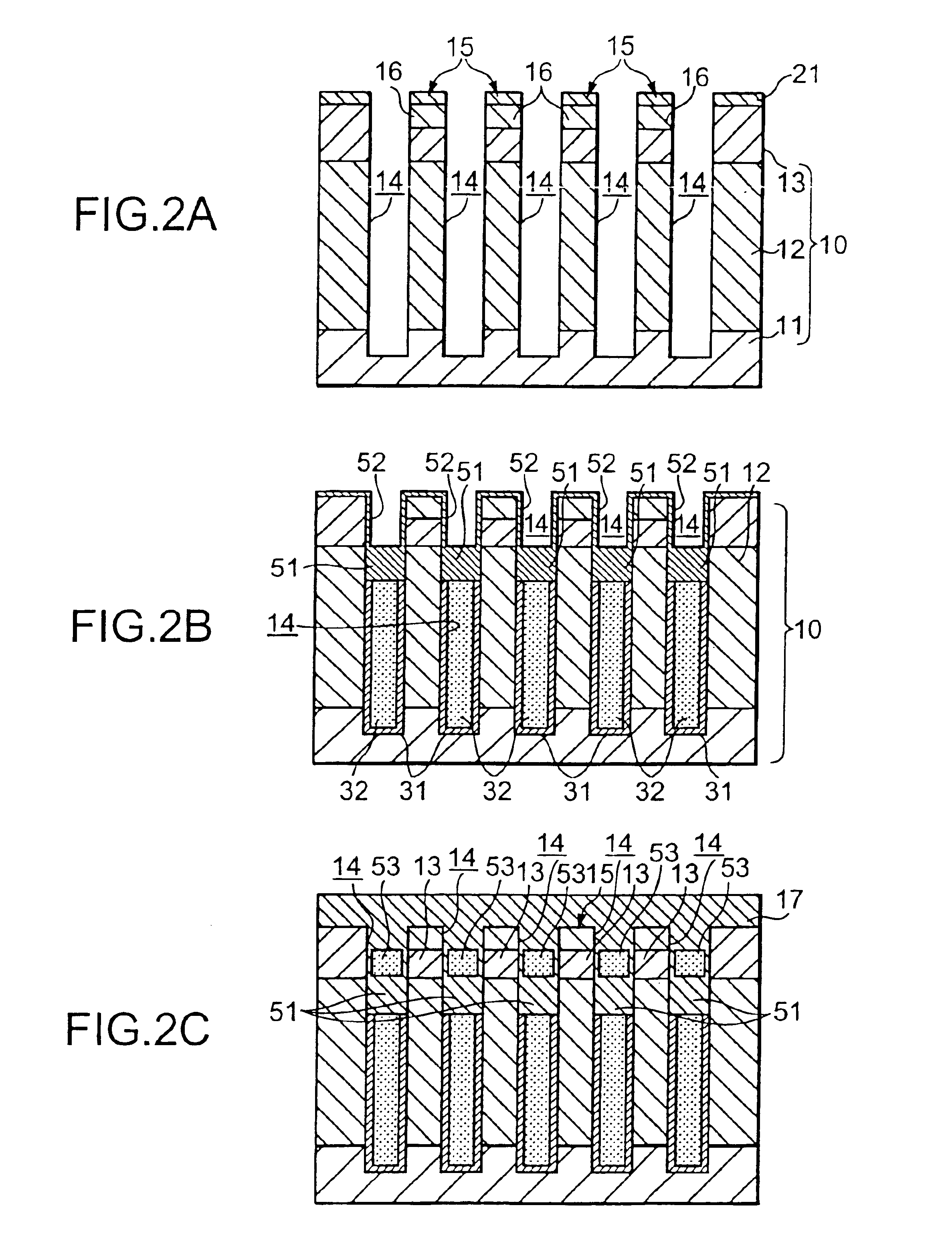Semiconductor memory and method of manufacturing the same
- Summary
- Abstract
- Description
- Claims
- Application Information
AI Technical Summary
Benefits of technology
Problems solved by technology
Method used
Image
Examples
first embodiment
[0045]A semiconductor memory according to the present invention will be described below with reference to FIGS. 1A, 1B. FIG. 1A shows a layout plan view, and FIG. 1B shows a sectional view of a schematic configuration on an A-A′ line. FIG. 1B shows the schematic configuration and the scale of FIG. 1B is not the same as that of FIG. 1A.
[0046]As shown in FIGS. 1A, 1B, a first semiconductor layer 12 composed of a second conductive type (N+ type) of a high concentration, in which a polarity is opposite to that of a first conductive type, is formed on a semiconductor substrate 11 of a first conductive type (hereafter, referred to as a P type). A silicon substrate of the P type is used in the semiconductor substrate 11. Further, an N+ type silicon layer is used in the first type semiconductor layer 12. A second semiconductor layer 13 of a second conductive type (N− type) of a lower concentration than the first semiconductor layer 12 is formed on the first semiconductor layer 12. The secon...
second embodiment
[0085]A semiconductor memory according to the present invention will be described below with reference to FIG. 6 and FIGS. 7A, 7B. Further, in FIG. 6 and FIGS. 7A, 7B, the same numeric codes are assigned to configuration elements similar to those described in FIGS. 1A to 1C.
[0086]As shown in FIG. 6 and FIGS. 7A, 7B, a shape of a cross-section of a semiconductor pillar (hereafter, referred to as the silicon pillar) 15 is rectangular-shaped, and a longitudinal insulated gate static induction transistor 5 is formed on one side thereof.
[0087]That is, a first semiconductor layer 12 with higher concentration (N+ type) of the second conductive type, in which polarity is opposite to that of the first conductive type, is formed on a semiconductor substrate 11 of the first conductive type (hereafter, referred to as the P type). The silicon substrate of the P type is used in the semiconductor substrate 11. Further, the silicon layer of the N+ type is used in the first semiconductor layer 12. A...
PUM
 Login to View More
Login to View More Abstract
Description
Claims
Application Information
 Login to View More
Login to View More - R&D
- Intellectual Property
- Life Sciences
- Materials
- Tech Scout
- Unparalleled Data Quality
- Higher Quality Content
- 60% Fewer Hallucinations
Browse by: Latest US Patents, China's latest patents, Technical Efficacy Thesaurus, Application Domain, Technology Topic, Popular Technical Reports.
© 2025 PatSnap. All rights reserved.Legal|Privacy policy|Modern Slavery Act Transparency Statement|Sitemap|About US| Contact US: help@patsnap.com



